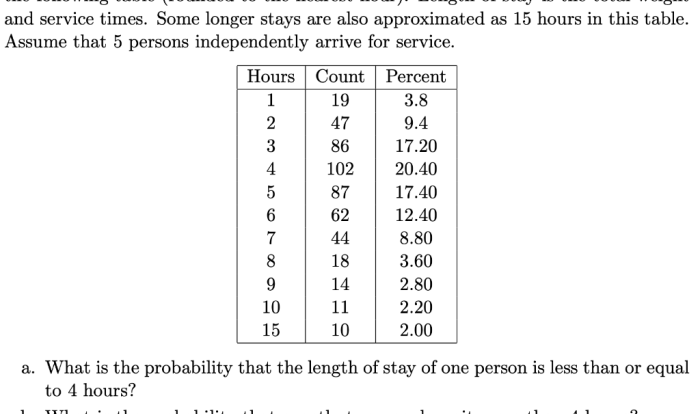Why is defibrillation important bls – Why is defibrillation important in BLS? Defibrillation is a life-saving procedure that can restore a normal heart rhythm during sudden cardiac arrest (SCA). It is a critical component of basic life support (BLS) and can significantly improve the chances of survival for victims of SCA.
Sudden cardiac arrest is a leading cause of death worldwide, and it can strike anyone, regardless of age or health. When SCA occurs, the heart suddenly stops beating, and blood flow to the brain and other vital organs is cut off.
Without immediate intervention, SCA is usually fatal within minutes.
Importance of Defibrillation in BLS
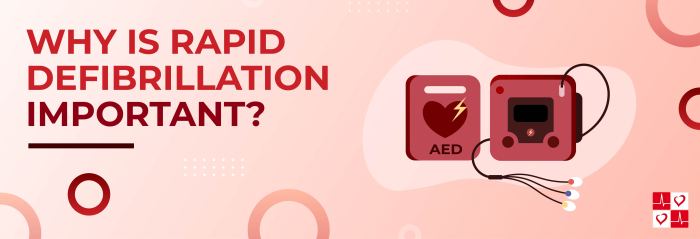
Defibrillation is a crucial procedure in Basic Life Support (BLS) as it can save lives during cardiac arrest. When a person’s heart goes into ventricular fibrillation (VF) or pulseless ventricular tachycardia (VT), defibrillation delivers a high-energy electrical shock to the heart, attempting to restore a normal heart rhythm.
Early defibrillation has been shown to significantly improve survival rates in cardiac arrest. According to the American Heart Association, defibrillation within the first 3-5 minutes of cardiac arrest can increase the chance of survival by up to 70%. The longer the delay in defibrillation, the lower the chances of survival.
Statistics on the Importance of Early Defibrillation
- A study published in the New England Journal of Medicine found that defibrillation within 3 minutes of cardiac arrest resulted in a survival rate of 50%, while defibrillation after 10 minutes resulted in a survival rate of only 5%.
- Another study, published in Circulation, showed that the chance of survival decreased by 7-10% with each minute of delay in defibrillation.
These statistics highlight the critical importance of early defibrillation in BLS and the need for prompt recognition and treatment of cardiac arrest.
How Defibrillation Works
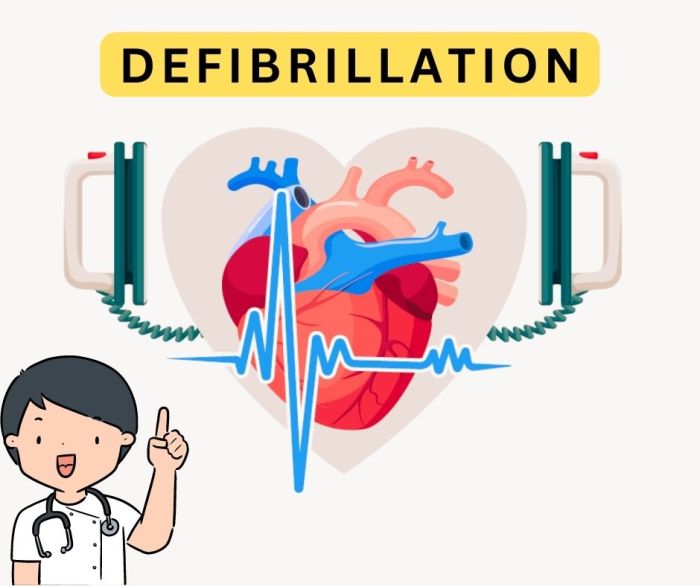
Defibrillation is a medical procedure that uses an electric shock to stop an irregular heart rhythm called ventricular fibrillation or pulseless ventricular tachycardia. This shock helps restore a normal heart rhythm and allows the heart to pump blood effectively.
When the heart is in ventricular fibrillation, the electrical impulses that coordinate the heart’s contractions become disorganized, causing the heart to quiver rather than pump blood. This can lead to sudden cardiac arrest and death if not treated promptly.
Electrical Process of Defibrillation
Defibrillation works by delivering a high-energy electrical shock to the heart through paddles or pads placed on the chest. This shock depolarizes the heart muscle, causing all the heart cells to contract simultaneously. This synchronized contraction can help restore a normal heart rhythm and allow the heart to resume pumping blood.
Ventricular Fibrillation vs. Pulseless Ventricular Tachycardia
Ventricular fibrillation (VF) and pulseless ventricular tachycardia (VT) are both life-threatening heart rhythms that require immediate defibrillation. VF is characterized by disorganized electrical activity in the heart’s ventricles, while pulseless VT is characterized by rapid, ineffective heart contractions.
Both VF and pulseless VT can lead to sudden cardiac arrest and death if not treated promptly. Defibrillation is the only effective treatment for these arrhythmias.
Indications for Defibrillation

Defibrillation is a life-saving procedure used to restore a normal heart rhythm in individuals experiencing cardiac arrest. It is crucial to recognize the signs and symptoms of cardiac arrest promptly to administer defibrillation effectively.
The primary indication for defibrillation in BLS is the presence of ventricular fibrillation (VF) or pulseless ventricular tachycardia (VT) in a patient who is unresponsive, not breathing normally, and has no signs of circulation (pulseless).
Recognizing the Signs and Symptoms of Cardiac Arrest
- Unresponsiveness: The patient does not respond to verbal or physical stimuli.
- Absence of normal breathing: The patient is not breathing or is gasping irregularly.
- Pulselessness: The patient has no palpable pulse in the carotid or femoral arteries.
It is essential to remember that defibrillation should only be performed after confirming cardiac arrest through these signs and symptoms. Delaying defibrillation can significantly reduce the chances of successful resuscitation.
Steps for Performing Defibrillation
Performing defibrillation using an automated external defibrillator (AED) involves a step-by-step procedure that ensures effective and safe delivery of an electrical shock to restore a normal heart rhythm.
Preparation
- Ensure the safety of the rescuer, victim, and bystanders.
- Call for emergency medical services (EMS) immediately.
- Retrieve the AED and follow its instructions.
Electrode Placement
- Open the AED package and expose the electrode pads.
- Remove the victim’s clothing from the chest area.
- Wipe the chest area with a dry cloth or towel to remove any moisture or debris.
- Peel off the backing of one electrode pad and place it on the victim’s bare chest, just below the right collarbone.
- Peel off the backing of the second electrode pad and place it on the victim’s bare chest, on the left side of the chest, just below the armpit.
Shock Delivery, Why is defibrillation important bls
- Ensure that no one is touching the victim or the AED.
- Press the “Analyze” button on the AED.
- If the AED advises a shock, press the “Shock” button.
- After the shock is delivered, the AED will advise you to perform CPR.
Patient Monitoring
- Continue performing CPR for the duration advised by the AED.
- Monitor the victim’s breathing and pulse.
- If the victim starts breathing, place them in the recovery position.
- Continue monitoring the victim until EMS arrives.
Precautions and Considerations
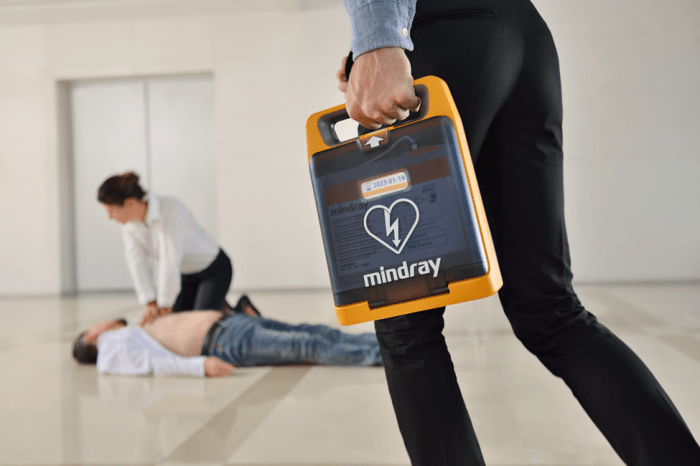
Defibrillation is a life-saving procedure that carries certain risks and complications. Understanding these risks and following safety protocols is crucial to ensure patient safety.
One of the primary risks associated with defibrillation is myocardial stunning, a temporary reduction in heart function following the shock. This can lead to hypotension, arrhythmias, and even cardiac arrest in some cases.
Another potential complication is skin burns at the electrode sites. Excessive energy delivery or improper electrode placement can cause burns, which can be minimized by using appropriate energy levels and ensuring proper electrode placement.
Importance of Following Safety Protocols
To minimize risks and ensure patient safety, it is imperative to adhere to established safety protocols during defibrillation:
- Verify the rhythm and ensure that defibrillation is indicated.
- Clear the patient’s chest of all jewelry and clothing that may interfere with electrode placement.
- Use the lowest energy setting that is effective in terminating the arrhythmia.
- Position the electrodes correctly to minimize the risk of burns.
- Monitor the patient’s vital signs and rhythm after defibrillation.
Importance of Seeking Medical Attention
After administering a shock, it is essential to seek medical attention promptly, even if the patient’s rhythm has been restored. This allows for further evaluation, monitoring, and treatment as needed.
Defibrillation is a crucial life-saving procedure, but it is imperative to be aware of the potential risks and complications associated with it. By adhering to safety protocols and seeking medical attention after administering a shock, healthcare professionals can ensure the best possible outcomes for patients experiencing cardiac arrest.
Ethical Considerations: Why Is Defibrillation Important Bls
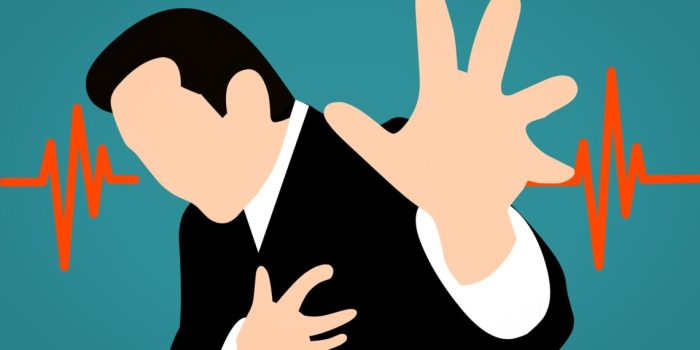
Defibrillation raises ethical concerns regarding informed consent and end-of-life decisions. Informed consent requires healthcare professionals to provide patients with comprehensive information about the procedure, including its potential benefits, risks, and alternatives. In emergency situations, however, obtaining explicit consent may not always be feasible.
In such cases, healthcare professionals must act in the patient’s best interests based on their clinical judgment.
End-of-Life Decisions
End-of-life decisions present another ethical challenge. Defibrillation can prolong life, but it may not always be in the patient’s best interests. Healthcare professionals must carefully consider the patient’s wishes, values, and prognosis when making decisions about defibrillation. They should involve the patient’s family or legal guardians in the decision-making process whenever possible.
Balancing Benefits and Risks
Healthcare professionals have a responsibility to balance the potential benefits and risks of defibrillation. They must consider the patient’s overall health, age, and prognosis when making decisions about the procedure. Defibrillation may not be appropriate for patients who have a poor prognosis or who are unlikely to benefit from the procedure.
FAQ Corner
What is defibrillation?
Defibrillation is a medical procedure that uses an electrical shock to restore a normal heart rhythm. It is used to treat ventricular fibrillation (VF) and pulseless ventricular tachycardia (VT), which are two of the most common causes of sudden cardiac arrest (SCA).
How does defibrillation work?
Defibrillation works by delivering a high-energy electrical shock to the heart. This shock depolarizes the heart muscle, which allows the heart’s natural electrical system to take over and restore a normal heart rhythm.
When is defibrillation indicated?
Defibrillation is indicated for patients who are in cardiac arrest and have a shockable rhythm, such as VF or pulseless VT.
How do I perform defibrillation?
Defibrillation is performed using an automated external defibrillator (AED). AEDs are easy to use and can be operated by anyone with minimal training.
What are the risks of defibrillation?
Defibrillation is a safe procedure, but there are some potential risks, such as burns, arrhythmias, and myocardial damage.
